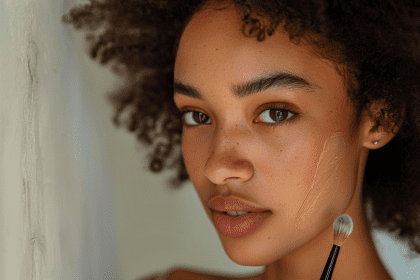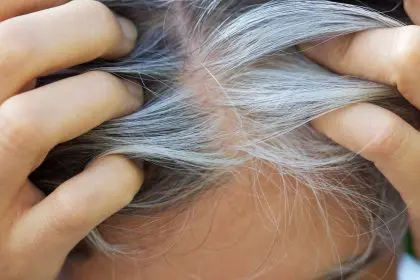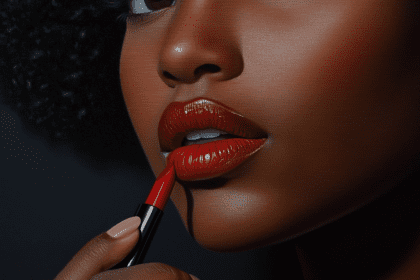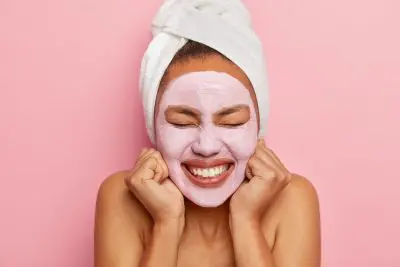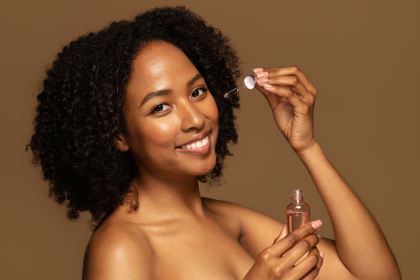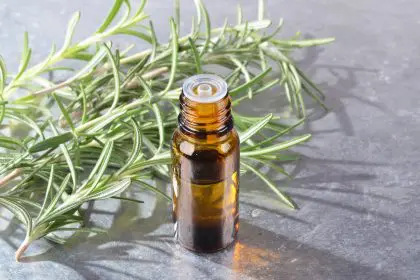That new shampoo promised incredible volume and shine, but instead delivered an itchy, irritated scalp. Sound familiar? You’re not alone. While we often focus on how hair products affect our locks, we tend to overlook how they impact the skin that actually supports those strands. Your scalp’s reaction to hair products isn’t just an annoying side effect. It’s valuable information your body is trying to communicate about what works for you and what doesn’t. Learning to decode these reactions can transform your hair care routine and save your skin from unnecessary distress.
Why your skin reacts to hair products
Your scalp is essentially an extension of your facial skin, just with more hair follicles and oil glands. This means it’s just as susceptible to irritation, allergic reactions, and sensitivity as the skin on your face. When you apply shampoos, conditioners, or styling products, you’re exposing this sensitive area to dozens of chemical compounds that can potentially trigger reactions.
The skin barrier on your scalp plays a crucial role in protecting underlying tissues from irritants and pathogens while retaining moisture. When certain ingredients in hair products disrupt this barrier, inflammation can occur, leading to itching, redness, flaking, or burning sensations.
Some reactions happen immediately after contact. Your scalp might tingle, burn, or itch within minutes of application. These acute responses often indicate an irritant reaction or possibly an allergic one. Other reactions develop more slowly, appearing hours or even days later as the cumulative effect of certain ingredients builds up or as they interact with your skin microbiome.
Surprisingly, even products marketed as “gentle” or “for sensitive skin” can cause reactions in some people. This happens because sensitivity is highly individual. An ingredient that causes no issues for 99% of users might be deeply problematic for the remaining 1%. Understanding your personal triggers is key to finding products that work harmoniously with your unique skin chemistry.
Common reactions and what they mean
Itching without visible changes is often one of the first signs that a product isn’t agreeing with your scalp. This can indicate mild irritation or the beginning stages of a more significant reaction. If you notice increased itchiness that begins shortly after using a new product, your skin is sending you an early warning signal worth heeding.
Redness and inflammation suggest a more pronounced irritant or allergic reaction. When your scalp becomes noticeably red, especially in areas where product concentration is highest, your skin is experiencing a defensive inflammatory response. This inflammation can sometimes extend beyond the scalp to the hairline, neck, or behind the ears where product runoff occurs during rinsing.
Flaking and dandruff-like symptoms might indicate that a product is too harsh and disrupting your scalp’s natural moisture balance. Products with strong detergents can strip away natural oils, leading to dryness and flaking. Alternatively, some ingredients might cause an overgrowth of the naturally occurring fungi on your scalp, leading to seborrheic dermatitis symptoms.
Bumps and breakouts along the hairline or scalp suggest follicular inflammation or occlusion. Certain oils and heavy ingredients in hair products can clog follicles, leading to small pustules or papules. This reaction is particularly common with styling products that contain waxes, heavy oils, or silicones.
Burning or stinging sensations signal significant irritation and potential barrier damage. These uncomfortable feelings are your nerves responding to inflammatory chemicals or to direct irritation from ingredients like alcohol, fragrances, or preservatives. A burning sensation should never be ignored or pushed through in the name of beauty.
Excessive oiliness following product use might seem counterintuitive, but it’s actually a common reaction. When products strip the scalp of its natural oils too aggressively, it can trigger a compensatory overproduction of sebum. Your scalp essentially thinks, “We’re too dry!” and cranks up oil production in response.
The usual suspects in hair product reactions
Sulfates like sodium lauryl sulfate and sodium laureth sulfate are common cleansing agents in shampoos that create that satisfying lather many people associate with cleanliness. However, these potent detergents can strip natural oils from the scalp and disrupt the skin barrier, causing dryness, irritation, and flaking in sensitive individuals.
Fragrance, often listed simply as “parfum” or “fragrance” on ingredient lists, represents a complex mixture of chemicals that manufacturers aren’t required to disclose specifically. These blends can contain dozens or even hundreds of different compounds, any of which might trigger reactions in sensitive individuals. Fragrance is one of the most common causes of allergic contact dermatitis from cosmetic products.
Preservatives prevent microbial growth in water-based products but can be significant irritants or allergens. Methylisothiazolinone, formaldehyde-releasing preservatives, and parabens are among the most frequent sensitizers in hair care formulations. These ingredients help your products last longer on the shelf but might make your scalp intensely uncomfortable.
Essential oils provide natural fragrance and claimed therapeutic benefits, but they’re far from universally gentle. Oils like peppermint, eucalyptus, and citrus oils contain powerful plant compounds that can irritate sensitive skin or trigger allergic responses in susceptible individuals. The natural origin of these ingredients doesn’t guarantee they’ll be well-tolerated.
Protein additives like hydrolyzed wheat, soy, or keratin are meant to strengthen hair, but they can cause surprising reactions in some people. Those with gluten sensitivity might react to wheat proteins even in topical products, while others might develop sensitivity through repeated exposure to these potentially allergenic compounds.
Silicones like dimethicone create that silky-smooth feeling in conditioners and styling products. While they’re generally less reactive than other ingredients, they can build up on the scalp over time, potentially trapping other irritants against the skin or blocking follicles.
Natural botanicals are increasingly popular in hair care, but plants contain complex chemical compounds that can cause reactions. Aloe vera, tea tree oil, and various plant extracts all have the potential to irritate or trigger allergic responses despite their natural status and potential benefits.
How to investigate your skin reactions
The elimination method is your first investigative tool when dealing with scalp reactions. Stop using all hair products temporarily and switch to the most basic, fragrance-free, hypoallergenic options you can find. Once your scalp has calmed down, reintroduce products one at a time, waiting several days between each addition to observe any reactions.
Patch testing provides valuable information before applying products to your entire scalp. Apply a small amount of product behind your ear or on your inner forearm and monitor for reactions over 24-48 hours. While not foolproof, this can help identify obvious irritants before they affect your entire scalp.
Ingredient cross-referencing can help identify patterns across products that cause reactions. Make a list of all ingredients in products that have triggered reactions, then look for overlapping components. Digital tools and apps that analyze cosmetic ingredients can streamline this process, helping you identify potential culprits more efficiently.
Consulting a dermatologist becomes necessary for severe, persistent, or highly uncomfortable reactions. Dermatologists can perform formal patch testing with standardized allergen panels to identify specific sensitivities. This medical approach is particularly valuable when over-the-counter products consistently cause problems despite your best efforts to avoid potential triggers.
Tracking environmental factors alongside product use can reveal important patterns. Sometimes reactions occur not because of the product alone, but because of how it interacts with environmental conditions. Humidity levels, seasonal changes, stress, hormonal fluctuations, and diet can all influence how your scalp responds to products.
Making the switch to scalp-friendly options
Fragrance-free truly means free from all scent-creating chemicals, not just pleasantly scented. Products labeled “unscented” might still contain masking fragrances to neutralize the smell of other ingredients. Look specifically for “fragrance-free” on labels when sensitivity is an issue.
Shorter ingredient lists generally mean fewer potential reactants. Products with minimal, straightforward formulations reduce your exposure to unnecessary additives and lower the statistical probability of including something your skin reacts to.
Patch-tested or dermatologist-recommended products have undergone additional scrutiny for potential reactivity. While individual responses still vary, these products have been evaluated specifically for their potential to cause skin reactions.
pH-balanced formulations respect your scalp’s naturally acidic environment. The scalp typically maintains a pH between 4.5 and 5.5, slightly acidic. Products formulated within this range are less likely to disrupt your skin’s protective acid mantle.
Dedicated sensitive scalp lines from reputable brands often eliminate common irritants while including soothing ingredients like allantoin, bisabolol, or niacinamide. These specialized formulations aim to cleanse and condition hair without triggering inflammatory responses.
Considering product dilution can also help manage reactions. Some people find that diluting stronger shampoos with water before application reduces irritation while still effectively cleansing. This approach decreases the concentration of potential irritants coming into contact with your scalp.
The long-term approach to scalp health
Rotation of products can prevent sensitivity development. Using the same products continuously can sometimes lead to developed sensitivities over time. Rotating between 2-3 well-tolerated options might reduce this risk while still maintaining your hair’s appearance and health.
Less frequent washing often improves scalp condition for those with reactive skin. Extending the time between washes allows your scalp’s natural oils to rebalance and the skin barrier to repair itself. Dry shampoo or simple water rinses can help manage appearance between cleansing sessions.
Scalp-specific treatments like gentle exfoliants and masks can address buildup and flaking without harsh detergents. These targeted treatments can help maintain scalp health without the frequent use of potentially irritating cleansers.
Addressing underlying conditions is crucial, as scalp reactivity often increases with conditions like seborrheic dermatitis, psoriasis, or eczema. Working with healthcare providers to manage these conditions can improve your tolerance for a wider range of hair products.
A holistic approach recognizes that scalp health reflects overall wellness. Stress management, adequate hydration, balanced nutrition, and sufficient sleep all contribute to a more resilient scalp that can better withstand potential irritants in hair care products.
Learning to interpret your scalp’s messages turns an uncomfortable experience into valuable information. By understanding what different reactions mean and systematically identifying triggers, you can develop a personalized approach to hair care that keeps both your locks and the skin beneath them in optimal condition. Your scalp has been trying to tell you what it needs. Now you know how to listen.


